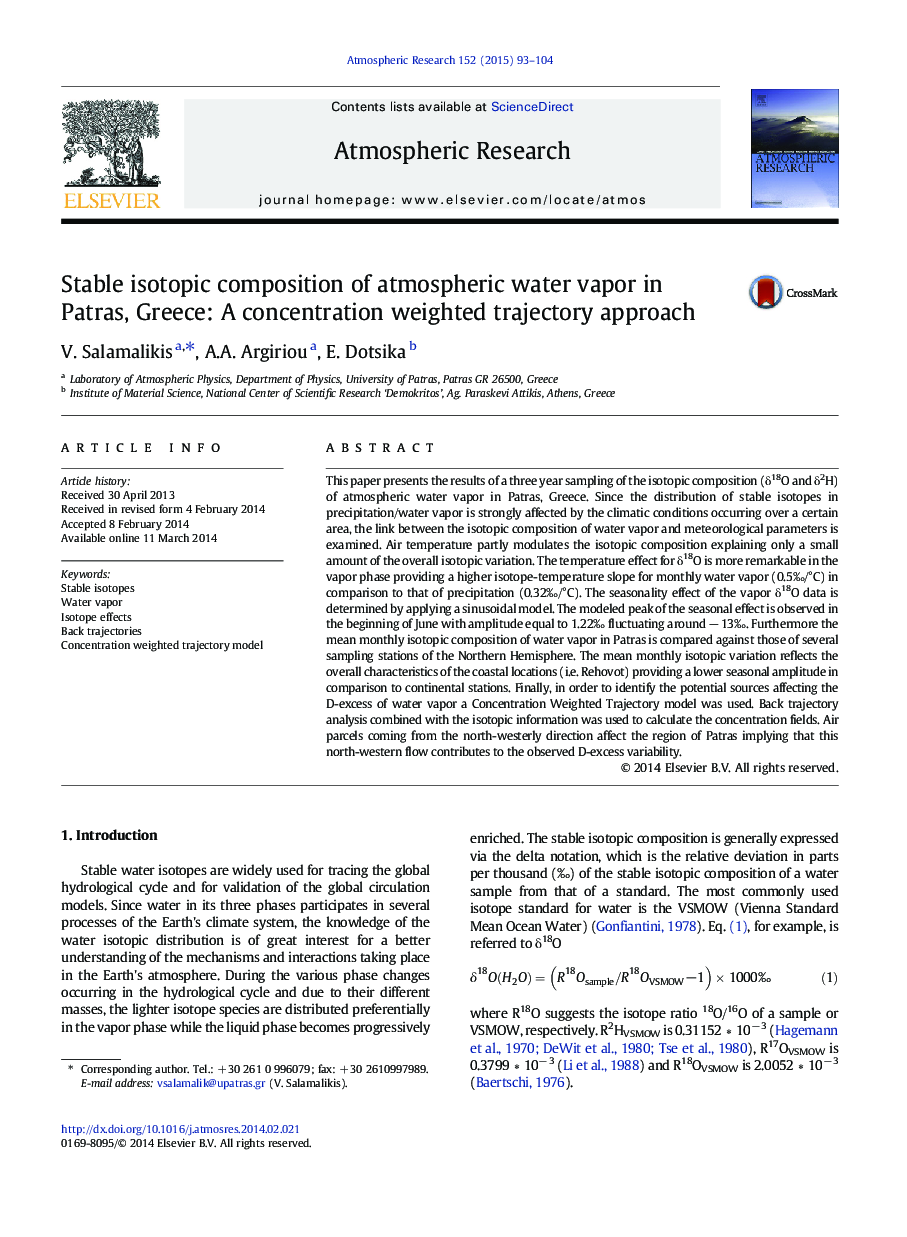| Article ID | Journal | Published Year | Pages | File Type |
|---|---|---|---|---|
| 4449835 | Atmospheric Research | 2015 | 12 Pages |
•Atmospheric water vapor samples are collected.•Collection site: Patras, Greece•The stable isotopic composition of samples is analyzed.•Isotopic composition is investigated via back trajectory modeling.•D-excess is affected mainly by air parcels that traveled over the Mediterranean.
This paper presents the results of a three year sampling of the isotopic composition (δ18O and δ2Η) of atmospheric water vapor in Patras, Greece. Since the distribution of stable isotopes in precipitation/water vapor is strongly affected by the climatic conditions occurring over a certain area, the link between the isotopic composition of water vapor and meteorological parameters is examined. Air temperature partly modulates the isotopic composition explaining only a small amount of the overall isotopic variation. The temperature effect for δ18Ο is more remarkable in the vapor phase providing a higher isotope-temperature slope for monthly water vapor (0.5‰/°C) in comparison to that of precipitation (0.32‰/°C). The seasonality effect of the vapor δ18Ο data is determined by applying a sinusoidal model. The modeled peak of the seasonal effect is observed in the beginning of June with amplitude equal to 1.22‰ fluctuating around − 13‰. Furthermore the mean monthly isotopic composition of water vapor in Patras is compared against those of several sampling stations of the Northern Hemisphere. The mean monthly isotopic variation reflects the overall characteristics of the coastal locations (i.e. Rehovot) providing a lower seasonal amplitude in comparison to continental stations. Finally, in order to identify the potential sources affecting the D-excess of water vapor a Concentration Weighted Trajectory model was used. Back trajectory analysis combined with the isotopic information was used to calculate the concentration fields. Air parcels coming from the north-westerly direction affect the region of Patras implying that this north-western flow contributes to the observed D-excess variability.
